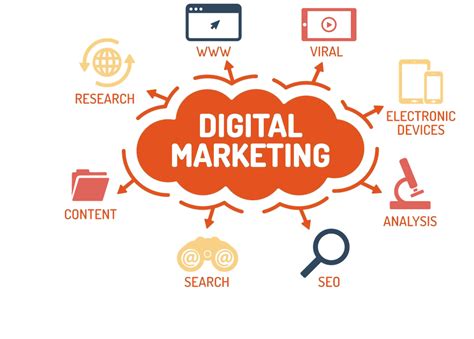Video Marketing Strategies: Boosting Your Business with Visual Content

In today's digital age, video marketing has become an essential tool for businesses to reach and engage with their target audience. With the rise of social media platforms and the increasing popularity of video content, incorporating video marketing strategies into your overall marketing plan can significantly boost your business's success. In this article, we will explore the various video marketing strategies that can help you effectively promote your products or services and drive conversions.
- 1. Define Your Goals
- 2. Know Your Target Audience
- 3. Create Engaging and High-Quality Videos
- Types of Videos:
- a. Explainer Videos
- b. Product Demonstrations
- c. Testimonials and Case Studies
- d. Behind-the-Scenes
- e. Educational and How-To Videos
- 4. Optimize Your Videos for Search Engines
- 5. Leverage Social Media Platforms
- 6. Collaborate with Influencers
- 7. Analyze and Optimize Your Results
- Conclusion
1. Define Your Goals
Before diving into video production, it is crucial to define your goals and objectives. What do you want to achieve with your video marketing efforts? Are you looking to increase brand awareness, drive website traffic, generate leads, or boost sales? Clearly defining your goals will help you create targeted and impactful video content that resonates with your audience.
2. Know Your Target Audience
Understanding your target audience is key to creating video content that appeals to them. Conduct market research to identify your audience's demographics, interests, and preferences. This information will guide you in crafting videos that are relevant, relatable, and valuable to your target audience.
3. Create Engaging and High-Quality Videos
The quality of your videos plays a significant role in capturing and retaining your audience's attention. Invest in good equipment, such as cameras, lighting, and audio devices, to ensure your videos are visually appealing and have excellent sound quality. Additionally, focus on creating engaging and compelling content that tells a story, evokes emotions, and provides value to your viewers.
Types of Videos:
a. Explainer Videos
Explainer videos are short, concise videos that explain your product or service and its benefits. These videos are great for introducing your brand to new audiences and simplifying complex concepts or processes.
b. Product Demonstrations
Showcasing your product or service in action through product demonstration videos can help potential customers understand how it works and why they should choose it over competitors. These videos are particularly effective for industries such as technology, beauty, and food.
c. Testimonials and Case Studies
Testimonial and case study videos feature satisfied customers sharing their positive experiences with your brand. These videos build trust and credibility, as potential customers can see real people benefiting from your products or services.
d. Behind-the-Scenes
Behind-the-scenes videos provide a glimpse into your company's culture, processes, and people. These videos humanize your brand and create a sense of authenticity, fostering a deeper connection with your audience.
e. Educational and How-To Videos
Educational and how-to videos offer valuable information and teach your audience something new. By positioning your brand as an expert in your industry, you can establish trust and authority, attracting and retaining customers.
4. Optimize Your Videos for Search Engines
Just like written content, videos can be optimized for search engines to increase their visibility and reach. Use relevant keywords in your video titles, descriptions, and tags to improve your video's chances of appearing in search results. Additionally, consider transcribing your videos and adding captions to make them more accessible and search engine-friendly.
5. Leverage Social Media Platforms
Social media platforms, such as Facebook, Instagram, YouTube, and LinkedIn, offer excellent opportunities to share and promote your videos. Each platform has its own unique features and audience, so tailor your video content accordingly. Use eye-catching thumbnails, compelling captions, and relevant hashtags to maximize engagement and reach.
6. Collaborate with Influencers
Influencer marketing has become a powerful tool for brands to reach their target audience. Collaborating with influencers who align with your brand values and have a significant following can help you expand your reach and credibility. Create engaging video content together and leverage their influence to promote your brand.
7. Analyze and Optimize Your Results
Regularly analyze the performance of your video marketing campaigns to identify what works and what doesn't. Pay attention to metrics such as views, engagement, click-through rates, and conversions. Use this data to optimize your future videos and improve your overall video marketing strategy.
Conclusion
Video marketing is a powerful tool that can significantly boost your business's success in today's digital landscape. By defining your goals, understanding your target audience, creating engaging videos, optimizing for search engines, leveraging social media platforms, collaborating with influencers, and analyzing your results, you can create a robust video marketing strategy that drives conversions and helps your business thrive.
Learn More :
 Marketing Funnel Optimization: Maximizing Conversion Rates and Revenue
22 December 2023 by Admin
Marketing Funnel Optimization: Maximizing Conversion Rates and Revenue
22 December 2023 by Admin
Marketing funnel optimization is a crucial aspect of any successful marketing strategy. It involves analyzing and improving each stage of the marketing funnel to maximize conversion rates and revenue....
 Marketing Automation Tools: Revolutionizing the Way Businesses Connect with Customers
22 December 2023 by Admin
Marketing Automation Tools: Revolutionizing the Way Businesses Connect with Customers
22 December 2023 by Admin
In today's digital age, businesses are constantly seeking innovative ways to streamline their marketing efforts and connect with customers more effectively. One such solution that has gained significa...
 Affiliate Marketing Programs: A Comprehensive Guide
22 December 2023 by Admin
Affiliate Marketing Programs: A Comprehensive Guide
22 December 2023 by Admin
Affiliate marketing programs have gained immense popularity in recent years as a lucrative way for individuals and businesses to earn passive income. This comprehensive guide will provide you with an ...
 Influencer Marketing Campaigns: A Powerful Strategy for Brand Promotion
22 December 2023 by Admin
Influencer Marketing Campaigns: A Powerful Strategy for Brand Promotion
22 December 2023 by Admin
In today's digital age, influencer marketing has emerged as one of the most effective strategies for brand promotion. With the rise of social media platforms, influencers have gained significant popul...
 Mobile Marketing Trends: The Future of Digital Advertising
22 December 2023 by Admin
Mobile Marketing Trends: The Future of Digital Advertising
22 December 2023 by Admin
Mobile marketing has become an essential part of any successful digital advertising strategy. With the increasing use of smartphones and tablets, businesses are realizing the importance of reaching th...
 Digital Marketing Analytics: Unlocking the Power of Data
22 December 2023 by Admin
Digital Marketing Analytics: Unlocking the Power of Data
22 December 2023 by Admin
In today's digital age, businesses are constantly seeking ways to gain a competitive edge. One of the most effective strategies is leveraging digital marketing analytics to make data-driven decisions....
 E-commerce Marketing: Boosting Your Online Business
22 December 2023 by Admin
E-commerce Marketing: Boosting Your Online Business
22 December 2023 by Admin
E-commerce marketing has become an essential strategy for businesses looking to thrive in the digital age. With the rise of online shopping, it is crucial for companies to establish a strong online pr...
 Email Marketing Solutions: Boosting Your Business with Effective Communication
22 December 2023 by Admin
Email Marketing Solutions: Boosting Your Business with Effective Communication
22 December 2023 by Admin
In today's digital age, email marketing has become an essential tool for businesses to reach out to their target audience and promote their products or services. With the right email marketing solutio...
 Content Marketing Strategy: A Comprehensive Guide
22 December 2023 by Admin
Content Marketing Strategy: A Comprehensive Guide
22 December 2023 by Admin
Content marketing has become an essential component of any successful marketing strategy. It involves creating and distributing valuable, relevant, and consistent content to attract and retain a clear...
 Social Media Marketing Agency: Boosting Your Online Presence
22 December 2023 by Admin
Social Media Marketing Agency: Boosting Your Online Presence
22 December 2023 by Admin
In today's digital age, social media has become an integral part of our lives. It has transformed the way we communicate, connect, and consume information. With billions of active users on various soc...
 The Importance of Digital Marketing Services
22 December 2023 by Admin
The Importance of Digital Marketing Services
22 December 2023 by Admin
In today's digital age, businesses need to have a strong online presence in order to stay competitive. This is where digital marketing services come into play. Digital marketing encompasses a wide ran...
 The Rise of Big Data Analyst Jobs
22 December 2023 by Admin
The Rise of Big Data Analyst Jobs
22 December 2023 by Admin
In today's digital age, data has become one of the most valuable assets for businesses. With the increasing amount of information being generated every second, companies are now turning to big data an...
 The Job Description of a Big Data Analyst
22 December 2023 by Admin
The Job Description of a Big Data Analyst
22 December 2023 by Admin
Big data has become an integral part of many industries, and companies are increasingly relying on data analysis to make informed decisions. As a result, the demand for big data analysts has grown sig...
 Big Data Analyst in Southwest
22 December 2023 by Admin
Big Data Analyst in Southwest
22 December 2023 by Admin
Big data has become an integral part of businesses across various industries. It refers to the massive volume of structured and unstructured data that organizations collect on a daily basis. This data...
 The Salary of a Big Data Analyst: Exploring the Lucrative Career Path
22 December 2023 by Admin
The Salary of a Big Data Analyst: Exploring the Lucrative Career Path
22 December 2023 by Admin
Big data has become an integral part of modern businesses, and the demand for skilled professionals who can analyze and interpret this vast amount of information is on the rise. One such profession th...
 Big Data Analytics Architecture: Unlocking the Power of Data
22 December 2023 by Admin
Big Data Analytics Architecture: Unlocking the Power of Data
22 December 2023 by Admin
Big data analytics has emerged as a game-changer in today's data-driven world. With the exponential growth of data, organizations are realizing the need to harness the power of big data to gain valuab...
 Big Data Engineer vs Big Data Analyst: Understanding the Roles and Responsibilities
22 December 2023 by Admin
Big Data Engineer vs Big Data Analyst: Understanding the Roles and Responsibilities
22 December 2023 by Admin
In today's digital age, data has become the lifeblood of businesses across industries. The ability to collect, analyze, and derive insights from large volumes of data has become crucial for organizati...
 How to Become a Big Data Analyst
22 December 2023 by Admin
How to Become a Big Data Analyst
22 December 2023 by Admin
Big data has become an integral part of many industries, and the demand for skilled big data analysts is on the rise. These professionals are responsible for analyzing large sets of data to uncover pa...
 Big Data Analytics: Definition and Importance
22 December 2023 by Admin
Big Data Analytics: Definition and Importance
22 December 2023 by Admin
Big data analytics refers to the process of examining large and complex datasets to uncover hidden patterns, correlations, and other valuable insights. It involves the use of advanced analytics techni...
 Big Data Analytics Companies: Revolutionizing Data-driven Decision Making
22 December 2023 by Admin
Big Data Analytics Companies: Revolutionizing Data-driven Decision Making
22 December 2023 by Admin
In today's digital age, data is being generated at an unprecedented rate. From social media posts to online transactions, every interaction leaves a digital footprint. This massive amount of data, kno...
 Big Data Analytics Applications: Revolutionizing Industries
22 December 2023 by Admin
Big Data Analytics Applications: Revolutionizing Industries
22 December 2023 by Admin
Big data analytics has emerged as a game-changer in various industries, revolutionizing the way businesses operate and make decisions. With the exponential growth of data in today's digital world, org...
 Big Data Analyst at Southwest Airlines
22 December 2023 by Admin
Big Data Analyst at Southwest Airlines
22 December 2023 by Admin
Southwest Airlines is one of the largest low-cost carriers in the world, serving millions of passengers each year. With a commitment to providing excellent customer service and affordable travel optio...
 The Importance of Big Data Analyst Certification
22 December 2023 by Admin
The Importance of Big Data Analyst Certification
22 December 2023 by Admin
In today's digital age, data has become one of the most valuable assets for businesses. The ability to collect, analyze, and interpret large volumes of data has become crucial for making informed busi...
 Senior Big Data Analyst Certification: Unlocking the Power of Data
22 December 2023 by Admin
Senior Big Data Analyst Certification: Unlocking the Power of Data
22 December 2023 by Admin
In today's digital age, data has become the new currency. Organizations across industries are collecting vast amounts of data, but the real value lies in the ability to analyze and derive insights fro...
 The Role of Business Analyst in Big Data
22 December 2023 by Admin
The Role of Business Analyst in Big Data
22 December 2023 by Admin
Big data has become a buzzword in the business world, and organizations are increasingly relying on it to gain insights and make informed decisions. However, the sheer volume and complexity of big dat...